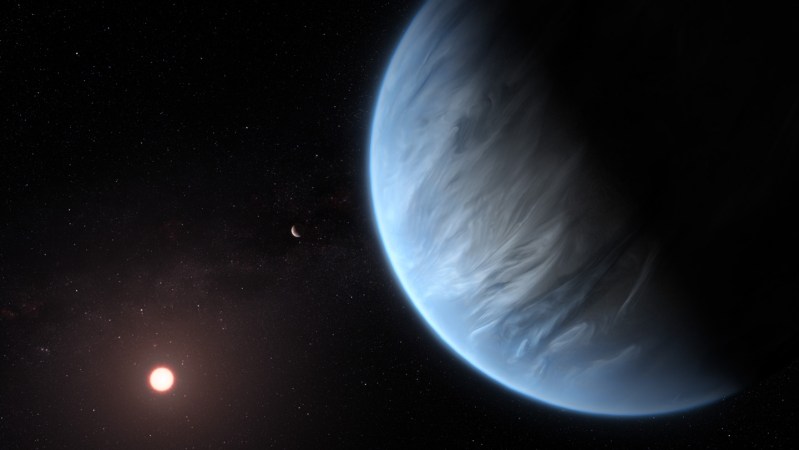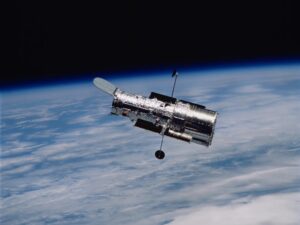
Recent laboratory experiments suggest that certain exoplanets may be capable of producing their own water rather than relying solely on external sources. Researchers simulated extreme conditions found on these distant worlds by bombarding olivine, a mineral commonly found in planetary interiors, with high-energy lasers in the presence of hydrogen gas. This reaction, detailed in a study published on October 29, 2023, in the journal Nature, offers a compelling explanation for the presence of water-rich exoplanets that orbit closely around their stars.
The study highlights a significant challenge in understanding how numerous exoplanets, notably those with sizes and masses between Earth and Neptune, could accumulate such large quantities of water. Unlike the solar system, where a clear divide exists between planets formed inside and outside the “snow line,” these exoplanets appear to defy conventional formation theories. Inside the snow line, planets like Venus lack substantial water due to solar vaporization, while those outside, such as Saturn and Neptune, possess abundant water and gas. Traditional astrophysical models suggested that water-laden planets must originate further from their star before migrating inward.
Researchers from various institutions, including the Lawrence Livermore National Laboratory and Arizona State University, conducted a series of intricate experiments to recreate the necessary conditions for water formation. They utilized a diamond anvil cell to subject olivine samples to extreme temperatures and pressures. However, the process is fraught with challenges, as heated hydrogen molecules can infiltrate the diamond’s carbon lattice, leading to breakage. By employing pulsed lasers to heat the sample briefly, the team minimized hydrogen infiltration.
Planetary scientist Harrison Horn expressed surprise at the experiment’s outcome, noting, “There was no rock left. All I had was metal and water.” The findings revealed that approximately 18 percent of the initial mass of olivine was converted into water. According to geophysicist Dan Shim, the implications of this discovery are profound, as it suggests that these chemical reactions could occur at the boundary between a planet’s rocky core and its gaseous hydrogen atmosphere. The resulting water content on such planets might range from 5 percent to 28 percent of the planet’s mass.
The outcomes of this research indicate that these water-rich exoplanets could take on various forms. They may evolve into massive ocean worlds, two to five times the size of Earth, entirely enveloped by deep liquid oceans. Alternatively, they might become “hycean” worlds, characterized by a hydrogen layer above their oceans. These findings suggest that the characteristics of these worlds lie on a continuum, rather than being distinctly separate types.
Factors influencing whether a planet becomes an ocean world or a hycean world likely include its proximity to its star, size, and initial composition. The study also reignites discussions regarding the potential habitability of hycean worlds. Previous studies suggested that the majority of water on these planets might be trapped in the mantle, leaving the surface dry. Yet, according to astrophysicist Remo Burn from the Observatoire de la Côte d’Azur, this new research “moves the water abundance back up,” which could bode well for the prospects of life on these distant worlds.
Furthermore, the implications extend to our understanding of Earth’s own water sources. While the specific conditions for this water-generating reaction are not present on modern Earth, they may have existed during its formative years. An early Earth, enveloped in a thick hydrogen-rich atmosphere, could have experienced similar reactions leading to water formation. This hypothesis gains credence from evidence found in ancient deep-earth diamonds, which contain water vesicles with distinct chemical signatures, indicating two potential reservoirs for Earth’s water.
The study not only sheds light on the formation of water on exoplanets but also contributes valuable insights into the origins of water on Earth itself, enhancing our understanding of planetary evolution and the possibility of life beyond our solar system.







